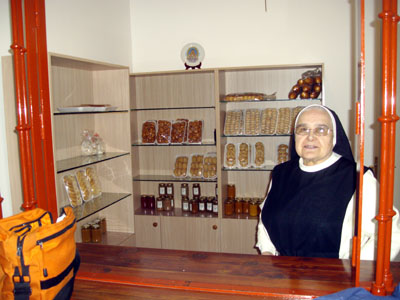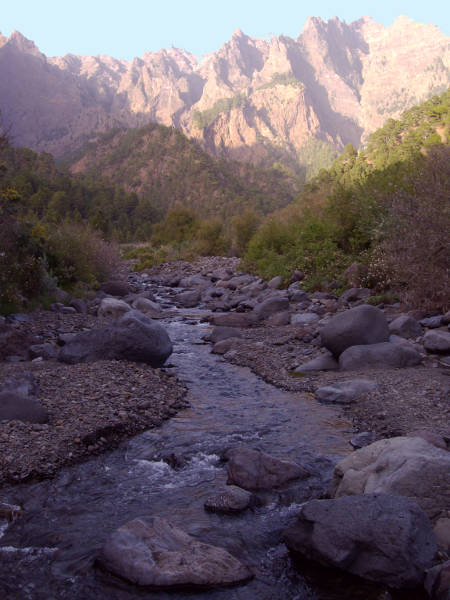The Cistercian Convent in Breña Alta
 The Convent of the Holy Trinity, Brena Alta
The Convent of the Holy Trinity, Brena AltaThe Cistercian convent of the Holy Trinity at Buenavista in Breña Alta is surprisingly new. It was founded in 1946, and it’s the only closed order on the island. I was surprised to find out that there are only ten nuns who live there.
The convent has a small shop. I first went there about ten years ago, in search of a rosary made of dragon-tree seeds, for a Catholic friend who was losing her eyesight. The seeds are big enough that you can feel your way through the prayers, and she was delighted. At the time, the shop was still in the older part of the building, and to my eyes, very exotic. The room was rather dark, and seemed darker because of the wooden panelling. The nun who came to serve me stayed behind a tiny barred window, as though she were in jail – until she saw that I had a toddler with me. Then she disappeared, and came round to my side for a good coochi-coo.
 The shop of the Convent of the Holy Trinity, Brena Alta
The shop of the Convent of the Holy Trinity, Brena AltaThe new shop is much airier, as you can see. They still sell rosaries and religious medals, but they’re best known for their biscuits, pastries and fruit liquors. Since they’re handmade, they’re a bit on the expensive side (these were €4.50), but they’re delicious. My mother-in-law always used to say, “God knows what they put in them, but they taste divine.”
 Biscuits from the Convent of the Holy Trinity, Brena Alta
Biscuits from the Convent of the Holy Trinity, Brena AltaThe shop’s open from 9:30 – 2 pm, from 3 pm – 6pm and 7 pm – 8pm. Take the road from Conception towards Velhoco, and then drive up the narrow lane almost opposite the La Graja restaurant. It’s signposted “Monasterio el cister”. After about 300 m you’ll find the entrance on your right. It’s signposted again, but much less prominently.
View Larger Map
Labels: biscuits, Breña Alta, Cistercian, convent, food, Holy Trinity
Bookmark with:
 Del.icio.us Del.icio.us
|
 Digg Digg
|
 Reddit Reddit
|
 Facebook Facebook
|
 Furl It Furl It
|
 Newsvine Newsvine
|
|






